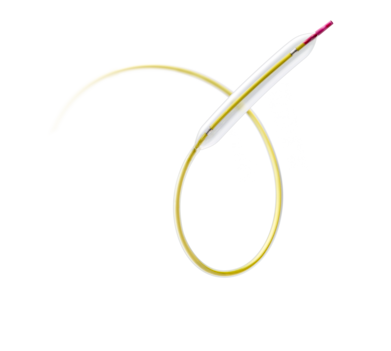Coronary balloons
Sprinter™ Legend™ RX semicompliant balloon dilatation catheter
Coronary balloons
Sprinter™ Legend™ RX semicompliant balloon dilatation catheter
The Sprinter Legend RX Balloon Catheter is indicated for dilatation of the stenotic coronary arteries or bypass grafts for improved myocardial perfusion.
Description
Performance you can trust
Sprinter™ Legend™ semicompliant balloons help you cross1, open, and treat lesions2 during challenging percutaneous coronary interventions (PCIs)3, and feature:
- Some of the industry’s lowest crossing profiles1
- Innovative crossing technology3
- A broad range of sizes2
| Balloon diameter (mm) | Balloon length (mm) | Crossing profile OD mm (in) | ||||||
|---|---|---|---|---|---|---|---|---|
| 6 | 10 | 12 | 15 | 20 | 25 | 30 | ||
| 1.25 | SPL12506X | SPL12510X | SPL12512X | SPL12515X | SPL12520X | — | — | 0.5 (0.020) |
| 1.50 | SPL15006X | SPL15010X | SPL15012X | SPL15015X | SPL15020X | — | — | 0.5 (0.021) |
| 2.00 | SPL20006X | SPL20010X | SPL20012X | SPL20015X | SPL20020X | SPL20025X | SPL20030X | 0.6 (0.022) |
| 2.25 | SPL22506X | SPL22510X | SPL22512X | SPL22515X | SPL22520X | SPL22525X | — | 0.6 (0.022) |
| 2.50 | SPL25006X | SPL25010X | SPL25012X | SPL25015X | SPL25020X | SPL25025X | SPL25030X | 0.6 (0.022) |
| 2.75 | SPL27506X | — | SPL27512X | SPL27515X | SPL27520X | SPL27525X | — | 0.6 (0.023) |
| 3.00 | SPL30006X | SPL30010X | SPL30012X | SPL30015X | SPL30020X | SPL30025X | SPL30030X | 0.6 (0.023) |
| 3.25 | — | — | SPL32512X | SPL32515X | SPL32520X | — | — | 0.6 (0.023) |
| 3.50 | SPL35006X | SPL35010X | SPL35012X | SPL35015X | SPL35020X | SPL35025X | SPL35030X | 0.6 (0.023) |
| 3.75 | — | — | SPL37512X | SPL37515X | SPL37520X | — | — | 0.6 (0.023) |
| 4.00 | SPL40006X | SPL40010X | SPL40012X | SPL40015X | SPL40020X | SPL40025X | SPL40030X | 0.6 (0.024) |
Based on Master validation plan, MVP8079, Sprinter™ Legend™ RX. September 2023.
Similar products
-
 Euphora™ semicompliant balloon dilatation catheter
Euphora™ semicompliant balloon dilatation catheterThe Euphora™ semicompliant balloon catheter is indicated for dilatation of a stenotic coronary artery or bypass graft to improve myocardial perfusion.
-
 NC Euphora™ noncompliant balloon dilatation catheter
NC Euphora™ noncompliant balloon dilatation catheterThe NC Euphora™ rapid exchange balloon dilatation catheter is a percutaneous transluminal coronary angioplasty (PTCA) rapid exchange system.
-
 NC Sprinter™ RX noncompliant balloon dilatation catheter
NC Sprinter™ RX noncompliant balloon dilatation catheterThe NC Sprinter™ RX catheter is indicated for balloon dilatation of the coronary artery or bypass graft stenosis to improve myocardial profusion.
-
 Sprinter™ Legend™ 1.25 mm balloon dilatation catheter
Sprinter™ Legend™ 1.25 mm balloon dilatation catheterThe Sprinter™ Legend™ RX and OTW 1.25 mm balloon catheter is indicated as a pre-dilatation catheter for enlarging coronary lumen diameters in PCI procedures.
TM* Third-party brands are trademarks of their respective owners.
- Based on Competitive Evaluation Report, TR-DA06-010, Sprinter Legend RX 1.25x20mm compared to Sprinter RX 1.50x20mm, Ryujin Plus 1.25x15mm, Avion CTO 1.25x20mm and Maverick 2 1.50x20mm N=10. 2008. Bench top testing data may not be indicative of clinical performance.
- Based on Product Performance and Report, PPS123817, Sprinter Legend RX. 2024. Bench top testing data may not be indicative of clinical performance.
- Based on Design Validation Report TR-DA07-001, Sprinter Legend RX. 2007. Bench top testing data may not be indicative of clinical performance.